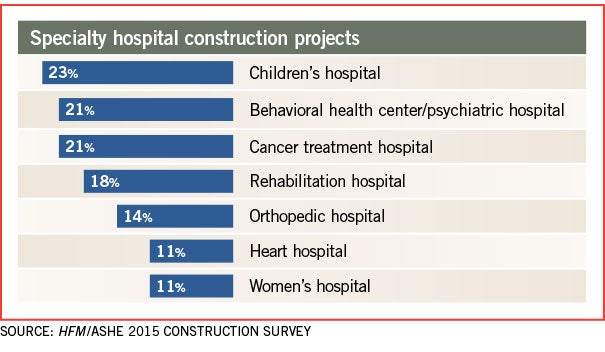Behavioral health construction in the spotlight
In the 2015 Hospital Construction Survey, behavioral health centers/psychiatric hospitals ranked No. 2 in specialty hospital projects being built. The same goes for 2014. When it comes to departmental construction projects within hospitals, expanding behavioral health services was No. 6 on the list for 2015, with 9 percent of respondents reporting projects currently under construction and 11 percent saying they had projects on the books.

|
The number of behavioral health care construction projects is a welcomed trend in today's health care landscape. In a recent Hospitals & Health Networks cover story, Geri Aston reports that "hospital EDs have become a major component of the nation's de facto behavioral health system [because of years] of funding cuts to public mental health organizations and the resulting loss of thousands of inpatient beds at state and county facilities"
According to the American Hospital Association (AHA), one in four Americans experiences a mental illness or substance abuse disorder each year. However, one of the biggest barriers in behavioral health care is a capacity shortage. For instance, a January 2012 AHA TrendWatch article reports that only 27 percent of community hospitals have an organized, inpatient psychiatric unit.
Many health systems are working to combat the issue by designing facilities that serve behavioral health patients better than predecessor facilities.
In our "Transforming behavioral health facility design" cover story, several architects explain that behavioral health care design is taking on a greater role in creating a healing environment — open spaces, natural light, views and access to nature, and other design elements are seen as integral factors in the care process.
The article shows that improving behavioral health care, involves not only the quantity of facilities being built, but also the quality that goes into them. It's an apt reminder when working on any patient care facility.




